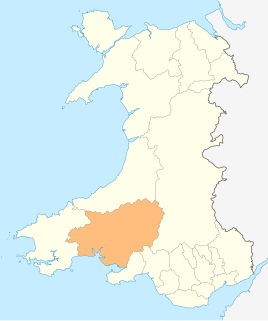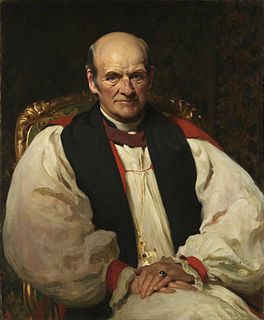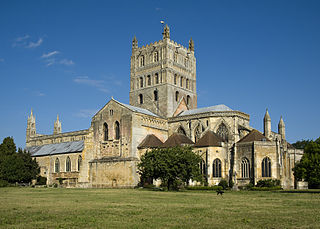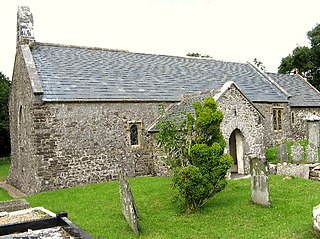| Eglwys Sant Ioan | |
|---|---|
 | |
| Location | Penuel Street, Carmarthen |
| Country | Wales, United Kingdom |
| Denomination | Anglican |
| History | |
| Founded | 1889 |
| Architecture | |
| Heritage designation | Grade II |
| Designated | 19 May 1981 |
| Architectural type | Church |
| Style | Victorian |
Eglwys Sant Ioan, or Church of St John, is an Anglican church in the town of Carmarthen, Carmarthenshire, Wales. It was built in 1889–1890 as the Welsh language church for the parish of St Peter. It is located in Penuel Street.

Anglicanism is a Western Christian tradition which has developed from the practices, liturgy and identity of the Church of England following the English Reformation.

Carmarthen is the county town of Carmarthenshire in Wales and a community. It lies on the River Towy 8 miles (13 km) north of its estuary in Carmarthen Bay. Carmarthen has a claim to be the oldest town in Wales – Old Carmarthen and New Carmarthen became one borough in 1546. Carmarthen was the most populous borough in Wales in the 16th–18th centuries, described by William Camden as "the chief citie of the country". Growth was stagnating by the mid-19th century, as new economic centres developed in the South Wales coalfield. The population in 2011 was 14,185, down from 15,854 in 2001. Dyfed–Powys Police headquarters, Glangwili General Hospital and a campus of the University of Wales Trinity Saint David are located in Carmarthen.

Carmarthenshire is a unitary authority in southwest Wales, and one of the historic counties of Wales. The three largest towns are Llanelli, Carmarthen and Ammanford. Carmarthen is the county town and administrative centre.
The architects for the building of Eglwys Sant Ioan were Middleton, Prothero & Phillot of Cheltenham. A. G. Edwards, Bishop of St. Asaph and former vicar of St Peter's, Carmarthen, laid the foundation stone on 25 June 1889 and Thomas Collins of Tewkesbury undertook the building work. The original estimate was for a total amount of around £2000 but the costs overran, and the final sum spent was £3041. The building was opened on 15 June 1890 by the Bishop of St. Davids. [1]

Alfred George Edwards, known as A. G. Edwards, was elected the first archbishop of the disestablished Church in Wales.

Tewkesbury is a town and civil parish in Gloucestershire, England. It stands at the confluence of the River Severn and the River Avon, and also minor tributaries the Swilgate and Carrant Brook. It gives its name to the Borough of Tewkesbury, of which the town is the second largest settlement. It lies in the far north of the county, forming part of the border with Worcestershire.
The church was designated as a Grade II listed building on 19 May 1981, being "a well-designed late Victorian smaller town church". [1]

A listed building, or listed structure, is one that has been placed on one of the four statutory lists maintained by Historic England in England, Historic Environment Scotland in Scotland, Cadw in Wales, and the Northern Ireland Environment Agency in Northern Ireland.














